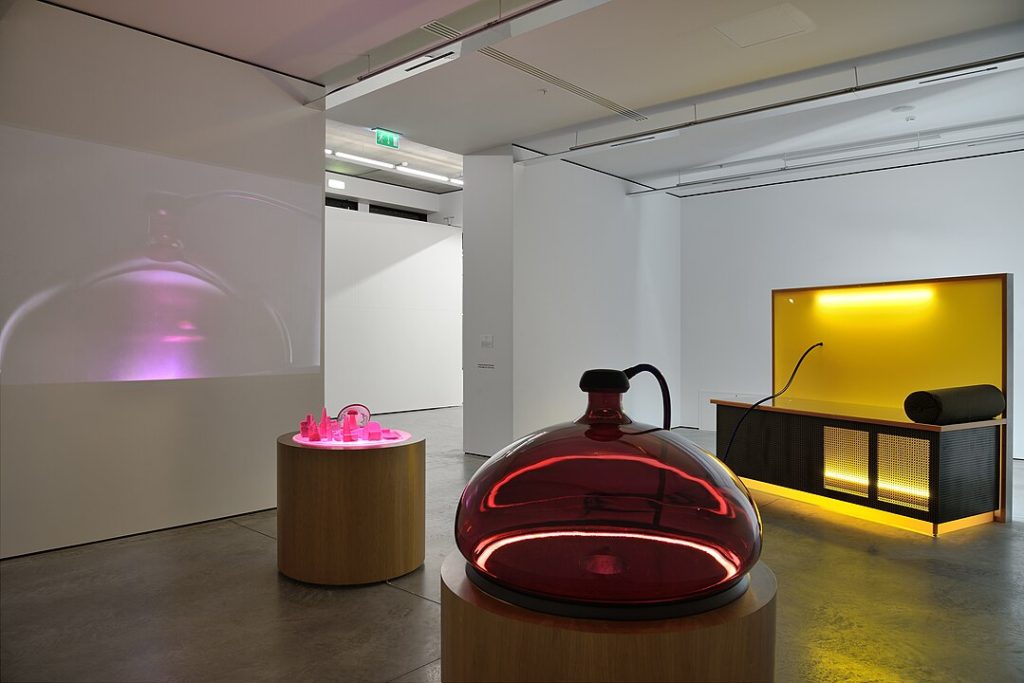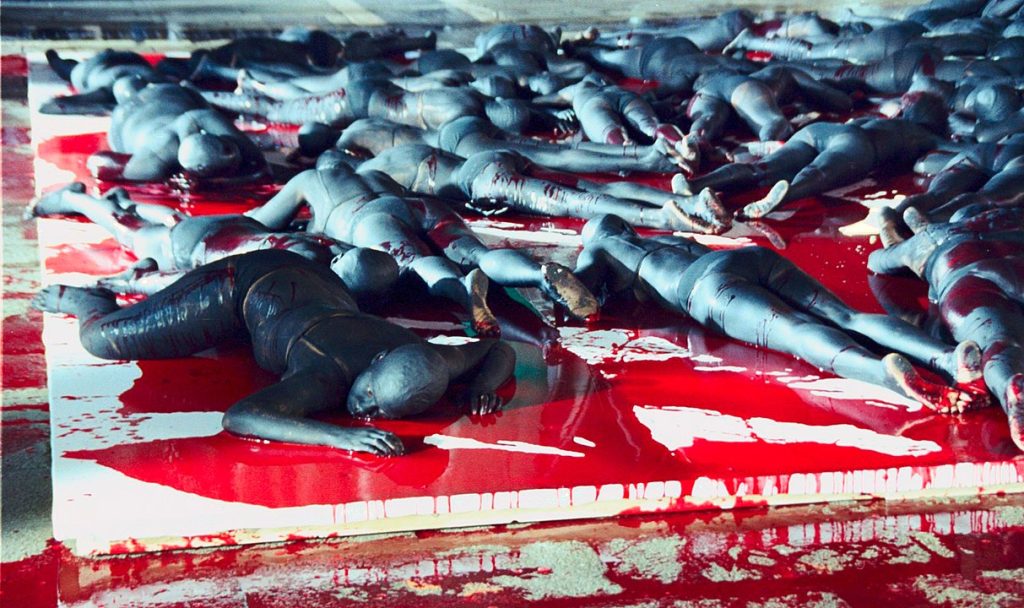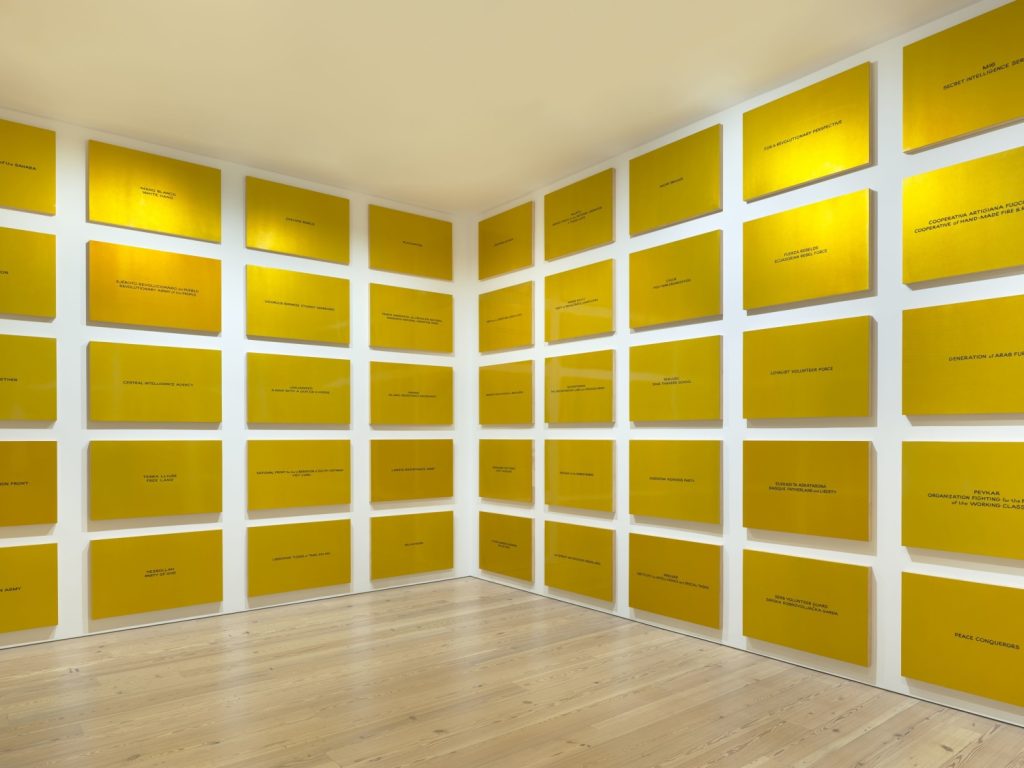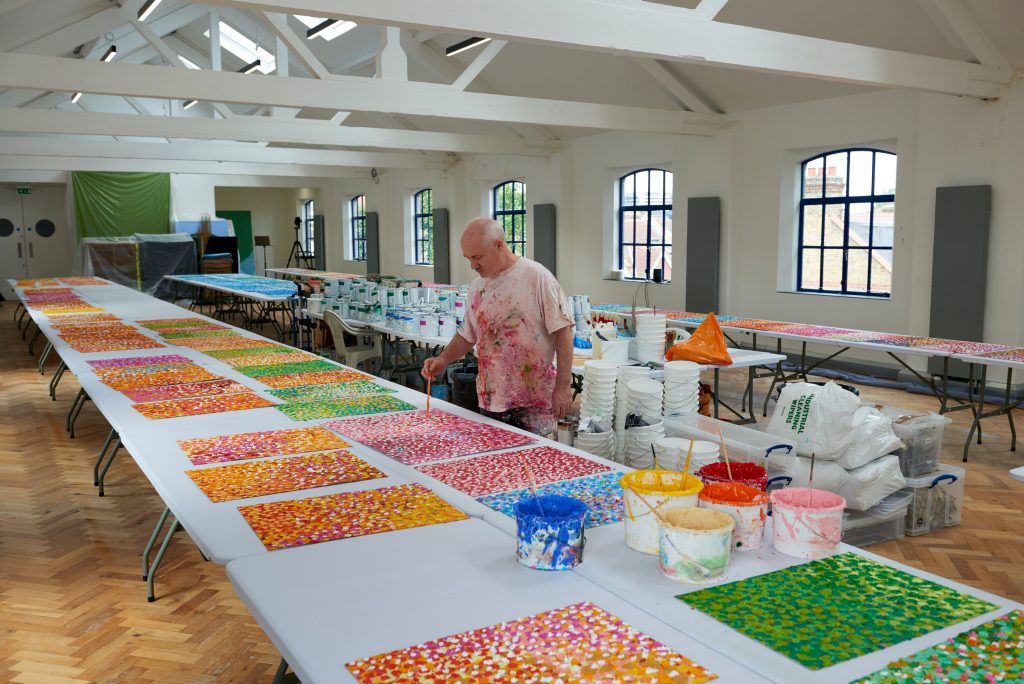Artists were essential in reflecting and influencing the ethos of the 1990s, a decade marked by a dramatic cultural shift. The 90s saw various powerful artistic movements, from the return of minimalist movements to the explosion of grunge to the ascent of hip-hop as a significant cultural force. This article examines the fundamental artistic movements, recognisable personalities, and important works of art that characterised this dynamic era.
Grunge music took off in the early 1990s, driven by acts like Nirvana, Pearl Jam, and Soundgarden. This genre transformed music and impacted fashion, the visual arts, and attitudes towards popular culture. A generation fed up with materialism and conformity found resonance in grunge’s rough, raw look, encouraging other artists to take a similarly genuine and gritty approach. Hip-hop culture simultaneously brought about a visual revolution and burst onto the famous scene. Once considered an underground art form, graffiti has become a valid expression. By fusing their backgrounds in fine art techniques with their street art backgrounds, artists such as Jean-Michel Basquiat and Keith Haring were able to attain international renown while challenging society standards and exploring identity politics.
The 90s saw a renaissance of minimalist art, in contrast to the raw energy of grunge and hip-hop. Artists who stripped away extraneous details to investigate the essential components of form, colour, and space, such as Donald Judd and Agnes Martin, embraced simplicity. This movement appealed to viewers looking for solace amid chaos by providing a calm counterpoint to the decade’s cultural upheaval. Technological breakthroughs have brought about a new era of artistic expression. The democratisation of art production by the widespread use of personal computers and digital tools enabled artists to experiment with virtual worlds and multimedia forms. Pioneers such as Laurie Anderson and Stelarc’s works pushed limits, fusing technology with interactive installations and performance art to predict the significant influence of the digital age on artistic production.
Throughout the 1990s, artists became more adept at challenging social norms and amplifying the voices of the marginalised. As the feminist art movement gained traction, photographers and text-based artists such as Barbara Kruger and Cindy Sherman explored gender roles and media representation through thought-provoking photography. Similarly, LGBTQ+ artists like Felix Gonzalez-Torres and David Wojnarowicz tackled activism and identity-related topics, changing the public conversation on civil rights and sexuality. With the acceleration of globalisation, artists blurred geographical boundaries and created hybrid art forms by drawing influence from various cultural traditions. This approach was typified by the works of Takashi Murakami and Yayoi Kusama, who celebrated global interconnectedness and challenged cultural preconceptions by fusing Western artistic norms with Japanese pop culture.
This generation of artists pushed limits and redefined creative traditions, reflecting and igniting societal changes. Their influence may still be seen in modern art, demonstrating the long-lasting impact of their imagination and vision on the world of culture. In conclusion, the artists of the 1990s successfully traversed a challenging landscape of technical innovation and cultural change, establishing a lasting legacy in the art world that still sparks discussion and inspiration today.
Damien Hirst
With his provocative and frequently unnerving works, Damien Hirst became one of the most well-known and controversial artists of the 1990s, creating a lasting impression on contemporary art. Hirst, born in Bristol, England, in 1965, became famous for his conceptual approach to art, which questioned conventional ideas of commercialism, mortality, and beauty. A significant theme in Hirst’s artwork during the 1990s was her concern with dying and the transience of existence. His art creations of animal carcasses, butterflies, and pill packaging highlighted his interest in mortality and the human condition. Through his art, Hirst challenged viewers to face complex realities about life and its unavoidable end by examining themes of consumerism, existentialism, and the contradictions of modern civilization.
Wolfgang Tillmans

Wolfgang Tillmans emerged as a prominent presence in the 1990s art scene while being best known for his revolutionary work in the early 2000s. His creative approach to photography defied accepted norms, making him a crucial figure in this decade of change. Tillmans’s unorthodox style of photography immediately brought him recognition. Unlike traditional photographers who concentrated on orchestrated compositions or journalistic images, Tillmans welcomed spontaneity and candidness. He merged abstract, still life, and portrait photography genres, frequently exhibiting his pictures in unusual ways, such as framed prints nailed straight to the wall. This method forced viewers to reevaluate their interactions with photographic art.
Andreas Gursky
Andreas Gursky rose to notoriety in the art world throughout this decade while being best recognised for his breakthrough work in the 1990s. He was a crucial character in contemporary art because of his unique photographic style and method, especially in the large-scale, digitally altered photos that perfectly encapsulated the spirit of globalised modernity. Gursky’s images captured the intricacies of human activity in large, typically impersonal environments and frequently included modern topics like supermarkets, stock exchanges, and world monuments. Works like “Rhein II” (1999), a minimalist panorama of the Rhine River, and “99 Cent” (1999), which depicts a supermarket aisle loaded with colourful consumer items, are two examples of his ability to condense complex metropolitan scenes into visually compelling images that combine reality and abstraction.
Maurizio Cattelan
Maurizio Cattelan gained notoriety in the art world in the 1990s, even though he is most recognised for his provocative and frequently contentious works of art that emerged in the late 20th and early 21st centuries. During this time, his work had a significant influence since it was marked by sardonic humour and irreverent commentary on institutions and societal standards. Throughout the 1990s, Cattelan became a crucial figure in contemporary art due to his irreverent style and willingness to tackle contentious subjects. His creations questioned accepted artistic norms and sparked a critical conversation about religion, politics, and social mores. Cattelan encapsulated the spirit of a turbulent decade marked by cultural transformations and worldwide turmoil through the combination of comedy and incisive social commentary.
Mike Kelley

Known for his innovative and diverse style that pushed conventional limits and examined issues of memory, trauma, and popular culture, Mike Kelley was a crucial character in the 1990s art scene. Kelley, born in 1954 and unfortunately died in 2012, significantly influenced modern art, especially in the 1990s.
Kelley frequently explored the murkier areas of memory and psychological suffering in his art. Works such as “More Love Hours Than Can Ever Be Repaid” (1987) and “Educational Complex” (1995) confronted painful truths about innocence, abuse, and societal repression while simultaneously evoking nostalgia through the use of craft supplies, household objects, and toys from childhood. Kelley regularly worked with emblems and icons from popular culture, twisting their meanings to attack the media and materialism. His installations and sculptures, such as the enormous, hanging artwork “Deodorised Central Mass with Satellites” (1991) of plush animals, forced spectators to reevaluate well-known stories and cultural conventions.
Rirkrit Tiravanija
The 1990s saw the rise of well-known contemporary artist Rirkrit Tiravanija, who contributed substantially to conceptual art. His groundbreaking work in relational aesthetics is what made him most famous. Tiravanija, born in 1961 to Thai parents in Argentina, owes much of his artistic sensibility to his cross-cultural upbringing. Tiravanija kept using his artwork to investigate topics of social context and cultural critique during the 1990s. His installations frequently included elements of hospitality, such as preparing meals or setting up areas for group activities, which promoted discussion and introspection on topics like consumerism, globalisation, and identity. Through creating spaces that encourage interpersonal relationships and group experiences, Tiravanija’s art prompted spectators to reevaluate how they relate to art, place, and one another.
Mona Hatoum
Born in Palestine, Mona Hatoum is a well-known artist from the 1990s who is praised for her provocative and frequently frightening works that examine identity, displacement, and the human condition. Her work crosses conventional lines to communicate important socio-political themes using sculpture, installation, film, and performance art. Mona Hatoum achieved widespread acclaim in the 1990s for her powerful symbolism and harsh visual language. Her installations often use commonplace objects rendered strange or altered, challenging spectators to reevaluate how they see personal boundaries, power relationships, and space. A chamber full of swinging metal cages lit by a single lightbulb in “Light Sentence” (1992), for example, evokes sensations of surveillance and captivity while addressing more general issues of control and vulnerability.
Vanessa Beecroft

In the 1990s, Vanessa Beecroft became well-known as an artist, drawing attention to herself with her daring and controversial performances that mixed fashion, art, and social criticism. Her work frequently questioned preconceived ideas about art and spectatorship by examining themes of identity, beauty, and the exploitation of the feminine form. Through the prism of the feminine body, Beecroft’s work continued investigating themes of identity and beauty throughout the 1990s. Her performances, which addressed cultural ideas of femininity and objectification, typically featured models in nude or semi-naked attire. The purposeful staging of her pieces, which frequently took place at esteemed fashion houses or art galleries, intensified the conflict between art as a spectacle and criticism.
Douglas Gordon
In the 1990s, Douglas Gordon became well-known in art for his thought-provoking and philosophically complex pieces, frequently dealing with memory, time, and perception themes. Born in Glasgow, Scotland, in 1966, Gordon works in various media, such as text-based pieces, photography, and video installations. Gordon frequently explores the emotional and psychological aspects of the human experience in his artwork. He regularly tinkers with well-known cultural objects, such as movies and famous visuals, to subvert viewers’ preconceptions and elicit deeper contemplation on memory, perception, and mortality.
Richard Billingham
British photographer and artist Richard Billingham rose to fame in the 1990s with his candid and accurate depictions of working-class British life. His work, mainly the “Ray’s a Laugh” series, came to represent a new movement in documentary photography that questioned accepted ideas about domesticity and family dynamics. Billingham’s work is distinguished by its frank depiction of working-class life and its unabashed honesty. He rejected conventional ideas of photographic excellence to convey the depth and genuineness of his subjects’ lives. His empathetic yet unsentimental photographs forced spectators to face the harsh realities of domesticity, poverty, and family dynamics in a post-industrial British setting.
Daniel Joseph Martinez

Daniel Joseph Martinez is a renowned personality in modern art, well recognised for his politically charged and thought-provoking pieces that first gained prominence in the 1990s. His art frequently forces viewers to face brutal realities about themselves and society by challenging traditional ideas of identity, authority, and cultural hegemony. Martinez’s daring interventions in public art and locations garnered him much attention. His 1993 Whitney Biennial piece “I Can’t Imagine Ever Wanting to Be White” caused a stir because it challenged racial privilege and social prejudices. Martinez’s dedication to questioning institutional norms and fostering critical discourse is demonstrated by this piece, which includes a text-based installation that challenges viewers to examine their racial identities.
Carsten Höller
Even though he isn’t usually associated with the 1990s art movement, Carsten Höller became a well-known contemporary artist in the following years thanks to his immersive and frequently humorous installations. Höller, born in 1961 in Belgium, creates art in various media, such as installation, sculpture, video, and photography. A curiosity about human perception, behaviour, and the nexus between art and science characterises his artistic activity. Themes of perception, sensory experience, and psychological effects are frequently explored in Höller’s work. He is renowned for building immersive settings that test spectators’ spatial awareness and sensory perception. His works often combine elements of experimental psychology with theme parks, encouraging spectators to get hands-on and interact with the artwork.






